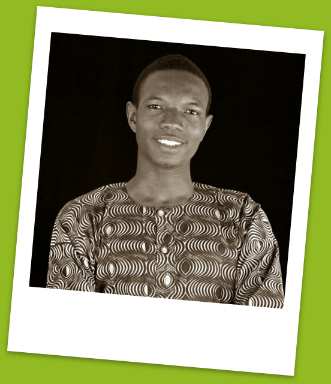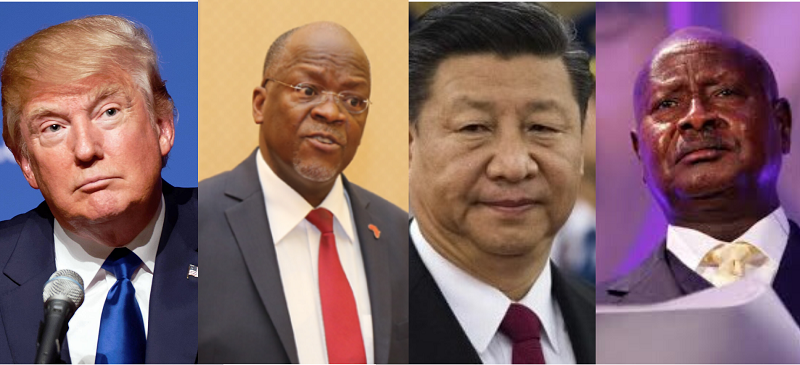“Local fabrics are one of the strongest signs of African culture”
March 26 Across Africa, one would hope that home-grown garments would be more popular than western jeans and t-shirts, however the reverse is often true. Commonwealth Correspondent Ayodeji Morakinyo, 24, from Nigeria, delves deep into this story of style and substance.
Across Africa, one would hope that home-grown garments would be more popular than western jeans and t-shirts, however the reverse is often true. Commonwealth Correspondent Ayodeji Morakinyo, 24, from Nigeria, delves deep into this story of style and substance.
Fashion is a statement of who we are. Whether we are young or old, white or black, male or female, we speak the non-verbal word of fashion through the style of our dress.
In Africa, when a young man wears jeans under an Ankara shirt, he is probably making a statement of his belief about the world. He may be expressing his approval of western comfort and smartness with the taste for an Italian Versace while affirming his African roots in a locally-made top.
Truth be told, no discussion about the African continent is complete without mention of the cultural element of fashion.
Since the very early Africans stopped clothing themselves with fabrics made from ancient mungo, fashion has enjoyed our attention. Then our descendants made baggy overalls and trousers for the men, while women had wrappers that covered their bodies from the chest to the thigh or knee region.
In west Africa, the male Yorubas then were mainly hunters and farmers who had just slack Buba tops or Agbadas and saggy trousers. The Hausa men majored in animal and crop farming and wore ancient Jalamias and sometimes dressed in hats, tops and trousers too. The Igbo men meanwhile often wore tops, caps and tied wrappers across their bodies from one shoulder down to the knee region.
Nigerian fashion has evolved over the years. Recognisable from the pack of rich African textiles and fabrics, the native manufacturers of Nigerian Ankara, Aso-Oke, Adire and Dashiki now have to compete with foreign manufacturers. Fabric traders even sell imported Ankara, Lace, Caftans, Organza and Suede.
Though home-made fabrics, being unique and traditional, should be more popular than foreign garments, the reverse of this is true. Today’s generation of Nigerians consume more imported fabrics than locally-made ones. This is perhaps because of the ostentatious nature of many rich Africans and the poor quality of some of the fabrics made by natives. Yet, local fabrics remain one of the strongest elements of African culture and tourism.
Among the Yorubas, no traditional marriage or introduction ceremony is complete without the use of such attire. While the Danshiki, Adire and Aso-Oke are cultural fabrics of Nigeria, the Mudcloth of Mali, the Adrinka, Wax Prints and Kente Cloths of Ghana are symbols of other parts of Africa.
Through industrial prints, ties and dies as well as batiks, fashion designers and clothing stylists obtain desired fabrics and create diverse wears. But most times, it is the customer that chooses or buys his own material and recommends a style to the tailor or designer. This innovation has introduced a merging of western and African styles into the fashion industry in Nigeria.
While stylists and fashion designers are often trained in Nigeria, many others travel far to learn the skill in Western societies and fashion institutes. The new generation designers often add more creativity to the native fabrics during the tailoring process. Common styles include gowns made from George fabric, Anakara skirts and blouses, Kampala tops, Ankara shirts, and Guinea wears and garments.
While several employers in Nigeria expect their staff to observe a Western dress code, there are days when other attire may be worn. On Friday for instance, most employees wear native fabrics.
In the end, we all make a speech of who we are. Without saying a word, we tell the world who we are.
…………………………………………………………………………………………………………………
About me:
“I am an animated and artistic writer hailing from the southwest region of Nigeria. I hold a degree in electronics and electrical engineering and am certified as an IT professional.
“On days when I am not busy with engineering and management activities, I write prose poems, short stories and journalistic commentaries. In the coming years, I hope to help other people’s lives around the world and aid in the reformation of Africa.”
…………………………………………………………………………………………………………………
Opinions expressed in this article are those of the author and do not necessarily represent the views of the Commonwealth Youth Programme. Articles are published in a spirit of dialogue, respect and understanding. If you disagree, why not submit a response?
To learn more about becoming a Commonwealth Correspondent please visit: http://www.yourcommonwealth.org/submit-articles/commonwealthcorrespondents/
…………………………………………………………………………………………………………………



